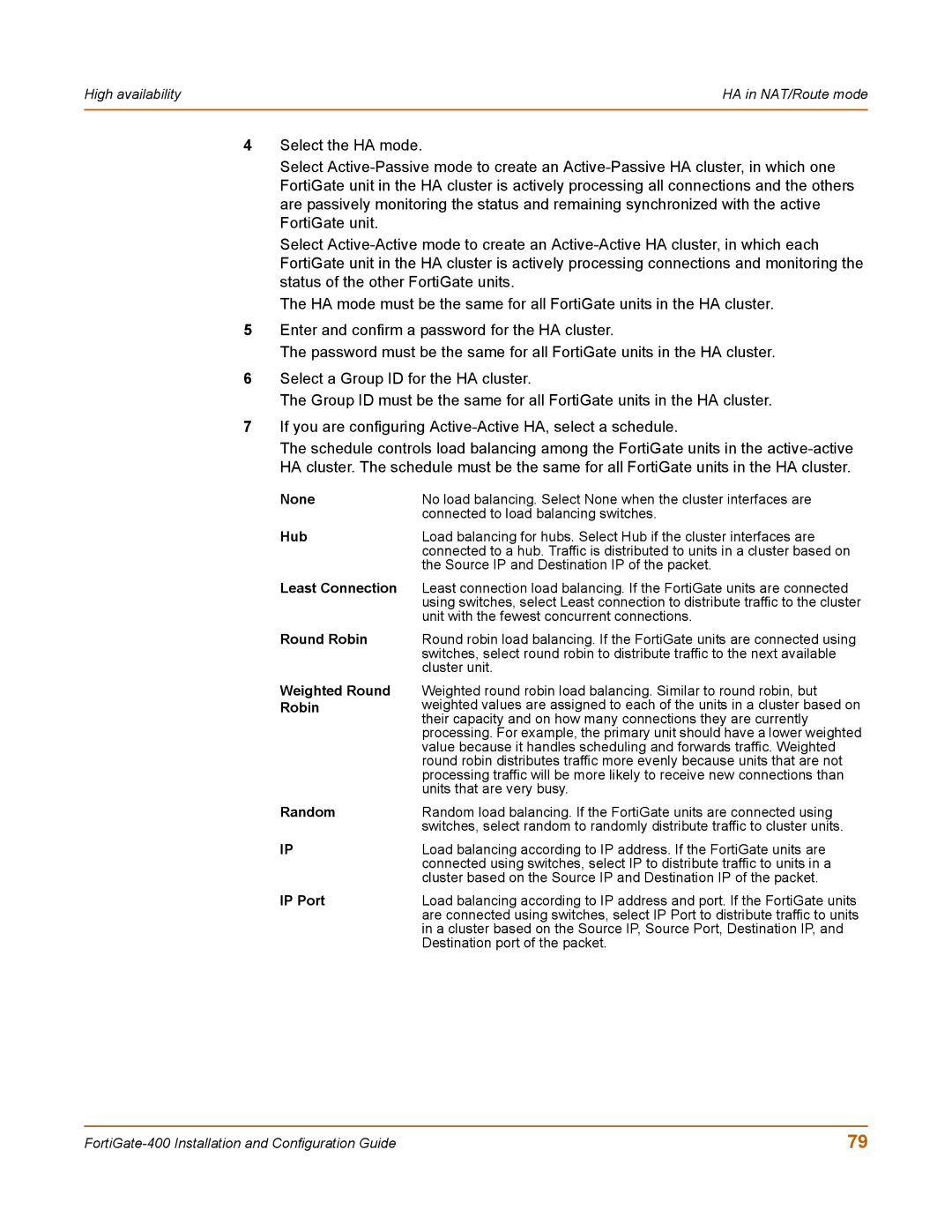High availability | HA in NAT/Route mode |
|
|
4Select the HA mode.
Select
Select
The HA mode must be the same for all FortiGate units in the HA cluster.
5Enter and confirm a password for the HA cluster.
The password must be the same for all FortiGate units in the HA cluster.
6Select a Group ID for the HA cluster.
The Group ID must be the same for all FortiGate units in the HA cluster.
7If you are configuring
The schedule controls load balancing among the FortiGate units in the
None | No load balancing. Select None when the cluster interfaces are |
| connected to load balancing switches. |
Hub | Load balancing for hubs. Select Hub if the cluster interfaces are |
| connected to a hub. Traffic is distributed to units in a cluster based on |
| the Source IP and Destination IP of the packet. |
Least Connection | Least connection load balancing. If the FortiGate units are connected |
| using switches, select Least connection to distribute traffic to the cluster |
| unit with the fewest concurrent connections. |
Round Robin | Round robin load balancing. If the FortiGate units are connected using |
| switches, select round robin to distribute traffic to the next available |
| cluster unit. |
Weighted Round Robin
Weighted round robin load balancing. Similar to round robin, but weighted values are assigned to each of the units in a cluster based on their capacity and on how many connections they are currently processing. For example, the primary unit should have a lower weighted value because it handles scheduling and forwards traffic. Weighted round robin distributes traffic more evenly because units that are not processing traffic will be more likely to receive new connections than units that are very busy.
Random | Random load balancing. If the FortiGate units are connected using |
| switches, select random to randomly distribute traffic to cluster units. |
IP | Load balancing according to IP address. If the FortiGate units are |
| connected using switches, select IP to distribute traffic to units in a |
| cluster based on the Source IP and Destination IP of the packet. |
IP Port | Load balancing according to IP address and port. If the FortiGate units |
| are connected using switches, select IP Port to distribute traffic to units |
| in a cluster based on the Source IP, Source Port, Destination IP, and |
| Destination port of the packet. |
79 |
